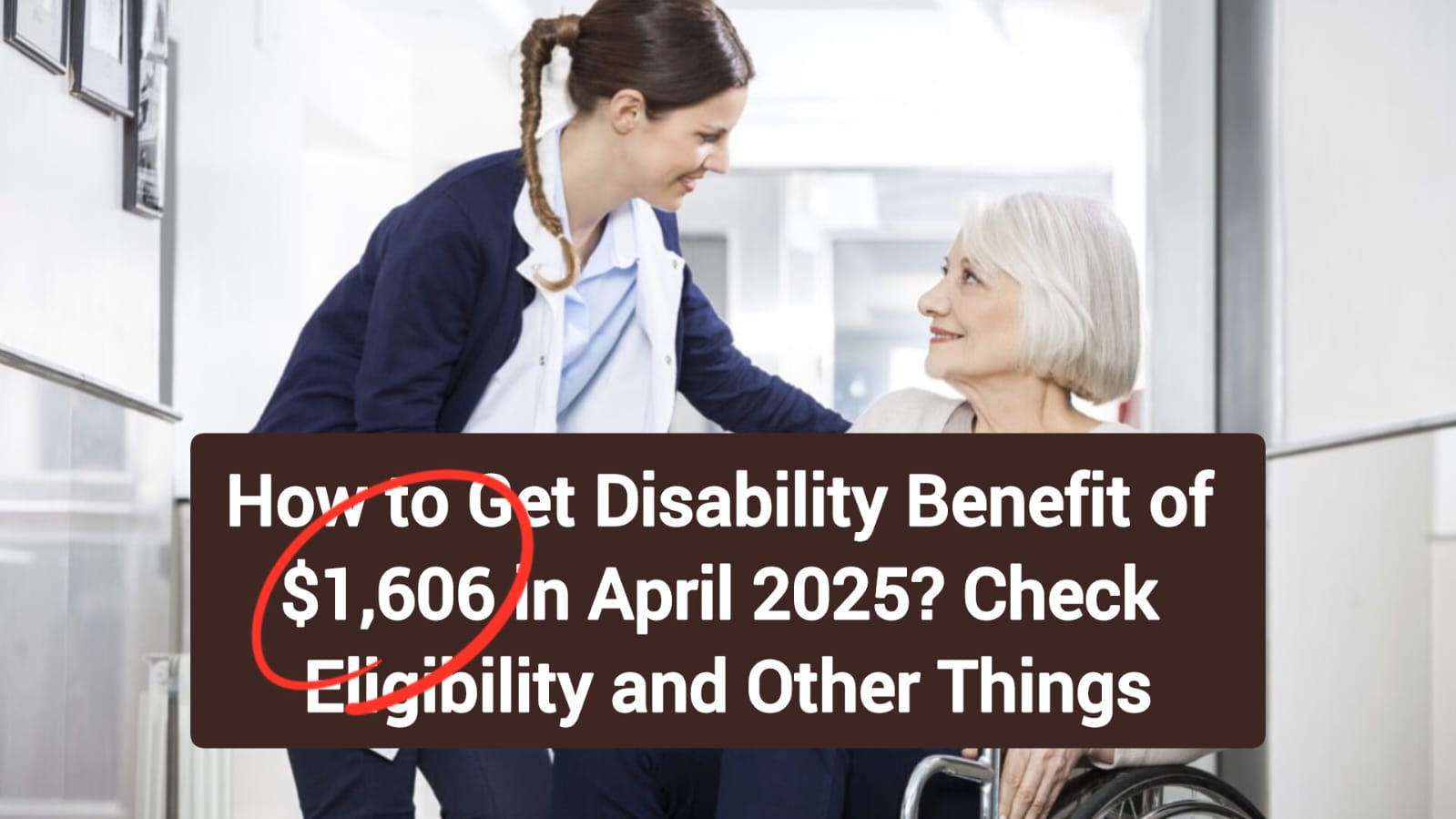Are you a Canadian senior who’s been hearing buzz about a significant boost to your Old Age Security payments? You’re not alone. In recent months, social media and various news outlets have been abuzz with claims about OAS payments jumping to $1,576 per month in 2025.
This has understandably caused excitement, confusion, and plenty of questions among Canada’s senior population. But what’s the real story behind these headlines, and what can you actually expect from your OAS payments in 2025?
In this comprehensive guide, I’ll cut through the confusion and provide you with accurate, up-to-date information about OAS payments in 2025.
We’ll explore what’s fact versus fiction, break down the actual payment amounts you can expect, and help you understand how to maximize your benefits. Whether you’re already receiving OAS or approaching eligibility age, this information will help you plan your finances with confidence.
Understanding the $1,576 OAS Payment Claims
First, let’s address the elephant in the room: Is there really going to be a $1,576 monthly OAS payment in 2025? Based on the most current and reliable information from official government sources, there is no confirmed increase that would bring OAS payments to $1,576 per month for the average recipient.
The confusion appears to stem from misinterpretations or potentially misleading information circulating online. While there have been rumors about significant increases, the actual confirmed OAS payment amounts for 2025 are considerably different.
The Reality of OAS Payments in 2025
As of March 2025, here are the actual maximum OAS payment amounts:
- Seniors aged 65-74: $727.67 per month
- Seniors aged 75 and older: $800.44 per month
These figures represent the standard OAS pension amounts that eligible seniors can receive. However, it’s important to note that these are maximum amounts, and not everyone will qualify for the full payment.
Your actual payment may be lower depending on factors such as your residency history in Canada and your income level.
So where might the $1,576 figure be coming from? One possibility is that this number represents a combination of OAS and other benefits, such as the Guaranteed Income Supplement (GIS), which provides additional support for low-income seniors.
OAS Combined with Other Benefits
For low-income seniors who qualify for both OAS and the maximum GIS, the total monthly payment could approach or even exceed $1,576. Here’s how the math might work:
| Benefit Type | Maximum Monthly Amount (March 2025) |
|---|---|
| OAS (ages 65-74) | $727.67 |
| OAS (ages 75+) | $800.44 |
| GIS (single, low-income) | $1,086.88 |
| Potential Total (OAS + GIS, 75+) | Up to $1,887.32 |
As you can see, when combined with GIS, the total benefits for a low-income senior aged 75+ could actually exceed the rumored $1,576 figure. However, it’s crucial to understand that GIS is only available to seniors with very limited income, and not all OAS recipients will qualify.
Who Qualifies for OAS Payments in 2025?
Now that we’ve clarified the payment amounts, let’s look at who’s eligible to receive OAS benefits in 2025:
Basic Eligibility Requirements
To qualify for OAS, you must:
- Be 65 years of age or older
- Be a Canadian citizen or legal resident
- Have resided in Canada for at least 10 years after turning 18 (if you currently live in Canada)
- Have resided in Canada for at least 20 years after turning 18 (if you currently live outside Canada)
The amount you receive depends on how long you’ve lived in Canada after age 18. To get the full OAS pension, you need to have lived in Canada for at least 40 years after turning 18.
If you’ve lived in Canada for less time, you may receive a partial pension (1/40th of the full pension for each year of residency after age 18).
Income Considerations and the OAS Clawback
Your income level also affects your OAS payments through what’s known as the “OAS recovery tax” or “clawback.” For 2025, if your individual net income exceeds $86,912, your OAS pension will be reduced by 15 cents for every dollar above this threshold.
The clawback thresholds for 2025 are:
- Income threshold where clawback begins: $86,912
- Income level where OAS is fully clawed back (ages 65-74): $142,609
- Income level where OAS is fully clawed back (ages 75+): $148,179
Think of the clawback like a gradually closing faucet – as your income rises above the threshold, the flow of OAS benefits slowly reduces until it eventually stops completely.
OAS Payment Dates for 2025
If you’re eligible for OAS, you’ll receive your payments on specific dates throughout the year. Here’s the complete payment schedule for 2025:
- January 29, 2025
- February 26, 2025
- March 27, 2025
- April 28, 2025
- May 28, 2025
- June 26, 2025
- July 29, 2025
- August 27, 2025
- September 25, 2025
- October 29, 2025
- November 26, 2025
- December 22, 2025
Payments are typically deposited directly into your bank account if you’ve set up direct deposit, or sent as checks through the mail.
Maximizing Your OAS Benefits
While there may not be a universal increase to $1,576 per month, there are strategies you can use to maximize your OAS benefits:
1. Delay Your OAS Claim
One powerful strategy is to delay claiming your OAS pension. For each month you defer your OAS after age 65 (up to age 70), your monthly payment increases by 0.6%. This adds up to a 7.2% increase per year, or a maximum of 36% if you delay until age 70.
This strategy works like compound interest in reverse – the longer you wait, the bigger your monthly payments will be when you start collecting.
2. Check Your Eligibility for GIS
If your income is below certain thresholds, you may qualify for the Guaranteed Income Supplement, which can significantly boost your monthly income. For 2025, a single senior with almost no income other than OAS could receive up to $1,086.88 per month in GIS, in addition to their OAS pension.
3. Manage Your Income Strategically
If your income is close to the OAS clawback threshold, consider strategies to reduce your taxable income. This might include:
- Timing RRSP withdrawals strategically
- Using Tax-Free Savings Accounts (TFSAs) instead of taxable investments
- Splitting pension income with a spouse
- Claiming all eligible tax deductions and credits
4. Stay Informed About Program Changes
OAS payment amounts are adjusted quarterly based on changes in the Consumer Price Index (CPI). Staying informed about these adjustments can help you plan your finances more effectively.
Conclusion
While the rumors of a universal $1,576 monthly OAS payment in 2025 appear to be misleading, the reality of Canada’s senior benefits system is still quite robust.
With maximum OAS payments of $727.67 for seniors aged 65-74 and $800.44 for those 75 and older, plus potential GIS benefits for low-income seniors, the total support available can be substantial.
Understanding your eligibility, payment dates, and strategies to maximize your benefits is crucial for making the most of these programs. Remember that OAS is just one component of retirement income, ideally complemented by the Canada Pension Plan (CPP), personal savings, and possibly workplace pensions.
By staying informed about the facts rather than rumors, you can make better financial decisions and ensure you’re receiving all the benefits you’re entitled to as a Canadian senior. After all, navigating retirement is challenging enough without the confusion of misleading information.
FAQs About OAS Payments in 2025
1. Will OAS payments really increase to $1,576 per month in 2025? No, there is no confirmed universal increase that would bring OAS payments to $1,576 per month for all recipients. As of March 2025, the maximum OAS payment is $727.67 for seniors aged 65-74 and $800.44 for those 75 and older.
However, low-income seniors who qualify for both OAS and GIS could receive combined benefits exceeding this amount.
2. How often are OAS payment amounts adjusted? OAS payment amounts are adjusted quarterly (January, April, July, and October) based on changes in the Consumer Price Index (CPI) to help keep pace with inflation.
3. Do I need to apply for OAS, or will I receive it automatically when I turn 65? Many seniors are automatically enrolled in OAS and will receive a notification letter the month after they turn 64. However, not everyone is automatically enrolled. If you don’t receive this letter, you should apply for OAS up to 11 months before your 65th birthday to ensure timely payments.
4. Can I receive OAS payments if I continue working past age 65? Yes, you can receive OAS while working. However, if your income exceeds the threshold ($86,912 in 2025), you may face the OAS recovery tax or “clawback,” which reduces your OAS pension by 15 cents for every dollar above the threshold.
5. What’s the difference between OAS and CPP? OAS is a residence-based benefit funded through general tax revenues, available to eligible seniors regardless of their work history. CPP, on the other hand, is a contributory program based on your work history and the contributions you made to the plan during your working years. Most Canadian retirees receive both OAS and CPP as part of their retirement income.
OAS Increase in 2025: Canadian Seniors Can Get $2350 – Check Eligibility Criteria!
9 Valuable Dimes Worth Over $1 Million Each – Still in Circulation



